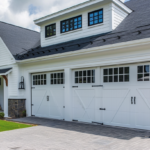Creating a mudroom can be a practical and efficient solution for organizing and managing the mess that often comes with outdoor activities. This article provides a comprehensive guide on how to create a mudroom, from assessing your space and determining your storage needs to selecting the appropriate flooring and designing an efficient layout. Discover how to incorporate functional and stylish elements into your mudroom to enhance its usefulness and aesthetic appeal.
Assess Your Space
When assessing your space, it is important to consider the dimensions, layout, and functionality of the area before proceeding with the creation of a mudroom. This step is crucial to maximize functionality and enhance organization within your home. Start by measuring the dimensions of the space to ensure that it can accommodate the necessary elements of a mudroom, such as storage cabinets, a bench, and hooks for hanging coats and bags. Consider the layout of the space and how it can be optimized to create an efficient flow for entering and exiting the house. Additionally, think about the functionality you want to achieve with your mudroom. Do you need ample storage for shoes and outdoor gear? Or do you require a space for pet supplies and laundry? By carefully assessing your space, you can design a mudroom that meets your specific needs and enhances the organization of your home.
Determine Your Storage Needs
To create an efficient and organized mudroom, it is essential to accurately determine your storage needs, taking into account the number of coats, shoes, and accessories that require proper storage within the space. This will help you maximize organization and ensure that everything has a designated place. Start by assessing the number of family members and their belongings that will be stored in the mudroom. Consider the number of coats and jackets that will need hanging space, as well as the number of pairs of shoes that will require storage. Additionally, think about any accessories such as hats, scarves, and bags that need to be accommodated. Once your storage needs are determined, you can plan the layout and choose the appropriate storage solutions, keeping in mind any budget constraints you may have.
Choose the Right Flooring
The choice of the right flooring is crucial when creating a mudroom, as it needs to be durable, easy to clean, and able to withstand high foot traffic. When considering flooring options for a mudroom, there are several factors to keep in mind. One popular choice is ceramic or porcelain tile, as it is resistant to moisture and easy to clean. Another option is luxury vinyl plank, which mimics the look of hardwood but is more durable and water-resistant. Additionally, laminate flooring is a cost-effective choice that offers durability and easy maintenance. When installing flooring in a mudroom, it is important to properly prepare the subfloor, use the correct underlayment, and follow the manufacturer’s installation instructions for the chosen flooring material. By carefully selecting and installing the right flooring, a mudroom can be functional and aesthetically pleasing.
Design an Efficient Layout
One must consider various factors in order to design an efficient layout for a mudroom, such as maximizing storage space and ensuring easy access to essential items. When it comes to maximizing space, it is crucial to make use of every available inch. This can be achieved by installing wall-mounted shelves, hooks, and cabinets to keep items off the floor and create a sense of order. Additionally, utilizing vertical storage solutions such as tall cabinets or stackable bins can help create more room for organizing essentials. To ensure easy access to essential items, it is important to have designated spaces for frequently used items like shoes, coats, and bags. This can be achieved by incorporating a bench with built-in cubbies or installing hooks and shelves near the entrance. By considering these factors, one can design an efficient and functional mudroom layout that maximizes space and organizes essentials effectively.
Add Functional and Stylish Elements
How can functional and stylish elements be incorporated into the design of a mudroom? When designing a mudroom, it is important to consider both functionality and style. One way to incorporate both elements is by incorporating seating options. Adding a bench or a set of chairs allows for a comfortable space to sit while putting on or taking off shoes. This not only adds functionality but also enhances the overall aesthetic of the mudroom. Another way to add both functional and stylish elements is by adding decorative elements. This can include artwork, wall decals, or even a statement piece of furniture. These decorative elements not only add visual interest to the space but also make the mudroom feel more inviting and personalized. By carefully selecting and incorporating seating options and decorative elements, one can create a mudroom that is both functional and stylish.



